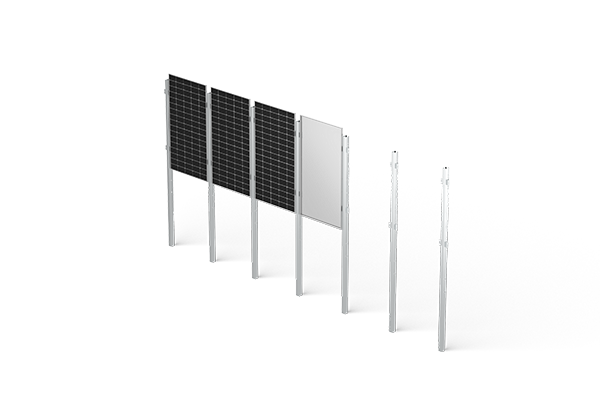Ground Mount Solar Design: A Foundation for Project Success
October 13, 2025
When planning a large-scale solar project, the engineering behind the ground mount solar design is a critical factor often overshadowed by panel selection. A robust design does more than just hold modules at an angle; it ensures structural integrity, maximizes energy yield over decades, and directly impacts the project's financial return. Getting this foundation right from the start is paramount for any successful installation. This article breaks down two key aspects of modern ground mount solar design to help project planners make informed decisions.

The Core Principles of a Durable System
A successful ground mount solar design is built on three pillars: site analysis, load calculations, and material selection. Before any drawings are made, a thorough understanding of the terrain, soil composition, and local climate is essential. Soil testing, for instance, determines the necessary foundation depth and type—whether driven piles, concrete ballasts, or helical piles are most suitable. This step prevents costly remediation work later. Furthermore, the structure must be engineered to withstand specific environmental loads, including high wind gusts, heavy snow accumulation, and seismic activity. The choice of materials, typically hot-dip galvanized steel for superior corrosion resistance, ensures the array operates safely and efficiently for its entire 25+ year lifespan. Neglecting any of these core principles in the ground mount solar design can compromise the entire project.
Innovative Approaches in Mounting Technology
As available land becomes more scarce or topographically challenging, innovation in ground mount solar design has become crucial. One significant advancement is the development of vertical mounting solutions. This approach is particularly valuable for maximizing energy production on narrow plots of land, along highway right-of-ways, or on agricultural property where minimizing ground footprint is a priority. By orienting panels vertically, this ground mount solar design reduces land use while maintaining high conversion efficiency. It represents a smart adaptation to real-world constraints, offering developers more flexibility in site selection. The effectiveness of any innovative design, however, hinges on precise engineering and expert installation to ensure the predicted performance is achieved.
A well-executed ground mount solar design is the unsung hero of a profitable and resilient solar project. It requires a careful balance of proven engineering principles and adaptive new technologies to meet unique site conditions. At Antaisolar, our global network of certified engineers provides on-site support, bringing direct expertise to your location to oversee installation and ensure your project’s foundation is built to last. By focusing on a solid design from the outset, developers can secure the long-term performance and reliability of their solar investment.

The Core Principles of a Durable System
A successful ground mount solar design is built on three pillars: site analysis, load calculations, and material selection. Before any drawings are made, a thorough understanding of the terrain, soil composition, and local climate is essential. Soil testing, for instance, determines the necessary foundation depth and type—whether driven piles, concrete ballasts, or helical piles are most suitable. This step prevents costly remediation work later. Furthermore, the structure must be engineered to withstand specific environmental loads, including high wind gusts, heavy snow accumulation, and seismic activity. The choice of materials, typically hot-dip galvanized steel for superior corrosion resistance, ensures the array operates safely and efficiently for its entire 25+ year lifespan. Neglecting any of these core principles in the ground mount solar design can compromise the entire project.
Innovative Approaches in Mounting Technology
As available land becomes more scarce or topographically challenging, innovation in ground mount solar design has become crucial. One significant advancement is the development of vertical mounting solutions. This approach is particularly valuable for maximizing energy production on narrow plots of land, along highway right-of-ways, or on agricultural property where minimizing ground footprint is a priority. By orienting panels vertically, this ground mount solar design reduces land use while maintaining high conversion efficiency. It represents a smart adaptation to real-world constraints, offering developers more flexibility in site selection. The effectiveness of any innovative design, however, hinges on precise engineering and expert installation to ensure the predicted performance is achieved.
A well-executed ground mount solar design is the unsung hero of a profitable and resilient solar project. It requires a careful balance of proven engineering principles and adaptive new technologies to meet unique site conditions. At Antaisolar, our global network of certified engineers provides on-site support, bringing direct expertise to your location to oversee installation and ensure your project’s foundation is built to last. By focusing on a solid design from the outset, developers can secure the long-term performance and reliability of their solar investment.
end
